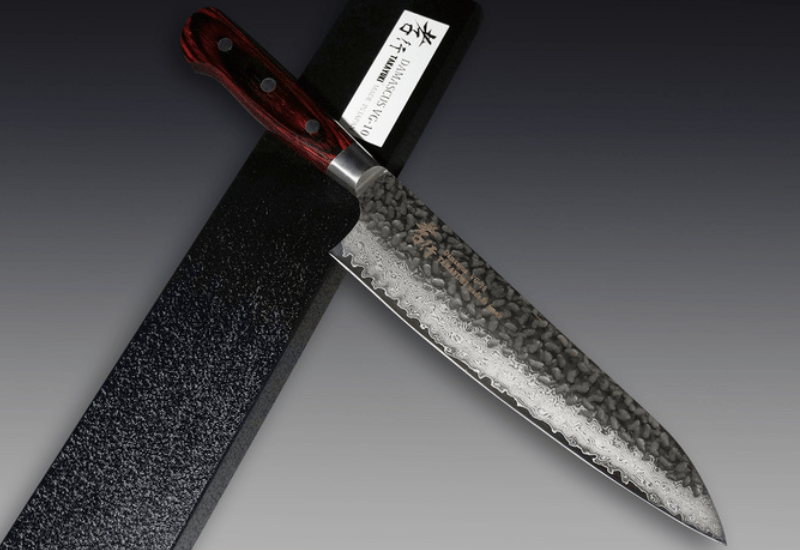History of Sakai Knives

img by : hocho-knife.com
Authentic Japanese dishes and their beauty lie deep in the hearts of diners from all parts of the world. The subtle flavors that blend along with the unique exoticness gave Japanese food a color of originality – one to never be forgotten once tasted. With intricacy being a significance keyword in the crafting of Japanese cuisine, Japanese knives are essential in the process.
Sakai Takayuki
Sakai Takayuki is among Japan’s top-tier knife manufacturing companies with a long history,marking it among the first-generation Japanese knife brands. In 1947, the first Sakai knives were
originally made in Sakai, a city in the Osaka Prefecture, which, up until today, continues to make approximately 90% of Japan’s handcrafted knives and is a major industry in the city.
In 1868, it is known that after Samurais were banned from using swords, Sakai blade smiths refocused their skills and turned their heads to cutlery production. Today, Sakai knives are designated as traditional crafts, widely recognized for their supreme quality.
Sakai knives become well known over Japan for its unique sharpness and cutting performance following a high demand for initially introduced tobacco knives in the 16th century. The Tokugawa Shogunate awarded Sakai blacksmiths a special seal of approval for their excellent craftsmanship.
Distinctive features of Sakai Takayuki Knives
Sakai blades are uniquely designed to ease the cutting processes, which includes: pushing ingredients aside while the knife is used to chop, slice, or cut – therefore, getting the finished products out of the way.
Made with high carbon steel through a unique forging technique, the main characteristics of Sakai knives include toughness, sharpness, and excellent edge-retention, where highly skilled blacksmiths uses various different techniques to craft traditional Sakai knives with at least four master skills during swords-forging processes.
Forging the Blades
When it comes to the forging of Sakai blades, the process involves combining softer iron with carbon-heavy steel to create superior quality blade bodies. Metals are first heated together with coal in a furnace using a special technique at a precise temperature. To form the shapes of the knives, the metals are then beaten and stretched out using a belt hammer.
The most challenging part of this process is to ensure that the temperature of the blade is maintained at the exact same range, which is highly important as it helps increase the density of the metal and improves its strength, toughness, and durability. At the end of the process, the soft iron becomes the body of the blade, while the carbon steel becomes the edge of the knife.
Sharpening
Blade sharpening begins with a process where a rough grindstone is used to sand the blade down to its preferred thickness and sharpness, while forming the final shape of the blade itself. At this point, cutting edges should be perfectly straight from the tip to the handle. Then, the forger further sharpens the blade using a fine grindstone, followed by another follow-up with a buff to polish the blade and give it the shine. Then, the blade will be coated with an anti-rust solution.
Lastly, the blade is placed into a rot-resistant, magnolia wood handle by heating the blade and inserting it right into the handle through a mallet. Engravings made into the blade with a hammer and a chisel will then be processed at this stage, following by a final quality inspection afterwards.
These traditional knife-forging techniques have been passed down from generation to generation. Today, most Japanese chefs choose professional, Sakai Takayuki knives due to its premium qualities and beautiful craftsmanship – which explains the fame and popularity Sakai gains throughout the years of expertise. Global chefs, international professionals, and culinary experts name Sakai Takayuki the best knife brands of Japan.
Sakai knives have also been used by many chefs around the world as well.
If you are passionate about cooking, give these knives a try as you will be impressed with the quality and it will make your cooking preparation more enjoyable.
To learn more about the history of Sakai knives, you can visit the Sakai Traditional Crafts Museum or experience making a knife for yourself at a knife shop or studio. You can also shop for original Sakai knives in Sakai in Osaka Prefecture, Japan.
